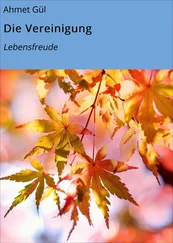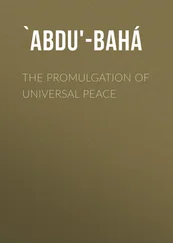Mümtaz seemed to favor one of the two zephyrs in the duel between Tevfik’s voice and Emin Dede’s ney . The Ferahfezâ Tevfik recited in traditional ritual technique was different from the same composer’s other Ferahfezâs, which served to instill modes of affection and anguish in Mümtaz. This version found the architecture of the venue somewhat alienating. Perhaps the Farsi lyrics, perhaps tradition itself, had transformed Tevfik’s voice, which he knew well, giving Mümtaz a taste of the turquoise hue of tiles in old Seljuk mosques, of the oil lamps within them alight with prayers now illuminating their way, and of the timeworn wood of old folding Koran stands. The timbre and style of the ney acknowledged nothing as traditional or modern, but chased after zaman without zaman , timeless time, that is, after fate and humanity as unrefined essences. And not only that. From time to time, into ney and human voice mingled the sound of the kudüm that emerged from depths, as if from beneath the ground, an awakening casting off the detritus of a thousand slumbers and laden with forgetting and being forgotten, or rather self-realization amid a multitude of cultures. And these awakenings and self-realizations never succumbed to futility. The sound of the kudüm always bore the enchanted call of ancient religions, its percussion contributing an order of earthly substantiation to the celestial journey.
The first ceremonial selam ended in a melody without resolution, like a wounded wing in final flutter. Nuran sought Mümtaz’s eyes; they stared at each other like strangers. The music had transfigured each into a vision familiar only to the seer — as in a dream. How disconcerting! thought Mümtaz.
Emin Dede grinned at İhsan as if in the wake of an initiation the gathered had traveled collectively. Then, with a sweet smile at Tevfik, he placed the ney to his lips.
Tevfik, along with the sound of the ney — and perhaps to avoid entering into a contest that might ruin the piece — this time all but transformed his voice into a very subtle bas-relief upon a finely cut, precious gemstone, barely discernible to the naked eye. During certain moments of the devotional prayer his voice expanded and intensified. Mümtaz, from his coign of vantage, noticed Nuran waiting her turn at the abyss of music, prayer beads in hand, as if expecting to be sacrificed; she seemed to be saying, “Set me ablaze, oh eternity!” She revealed such an anguished, withdrawn face, yet her shoulders stood strong. Self-assured by all she avowed, she resisted this tempest eternal like the stern of a golden galleon.
Mümtaz pondered the possibility that during a similar ceremonial, Beyhan Sultana, alone bearing five centuries of Ottoman fortitude in her shoulders, resembling Nuran, had gazed at Shaykh Galip from behind lattices in an area designated for royal ladies in the Yenikapı Mevlevî lodge. Whirling Mevlevîs, their ritual robes spinning in the aether, sparkled in a vision of supplication through the refinement of centuries, as one of the dervishes folded his arms before the presence of the one standing behind him.
Mümtaz saw sultan and composer Selim III — to whom he’d never listened, appearing rather like a gardener who, in advanced years, planted an exquisite rose sapling in his garden, with full knowledge that it was meant for some indeterminate future — genuflecting like a gilt and silver icon in the royal loge of a mosque, his face recalling the dervishes of Khorasan, a substantial ring adorning his hand, amid elegant melodies whose potential his royal highness himself had composed.
But what about Dede Efendi? Who was the man who’d arranged this venture of the soul with such fastidiousness, what was he like? On the day that the Ferahfezâ ceremonial was first performed, early in the nineteenth century, Sultan Mahmud II, rising from his sickbed, came to the Yenikapı Mevlevî lodge. All of Istanbul was present, including its most prominent figures, refined foreign guests, palace dignitaries, and opportunists mad with yearning to step onto some or another threshold of fortune. All of them came to hear this new ceremonial composed by Hamamîzâde İsmail Dede Efendi, Royal Chief Müezzen to His Exalted Excellency. Amid this enigmatic tempest, Mümtaz sought Sultan Mahmud II’s face, sallowed like worn oilcloth by consumption, beneath a heavily tasseled fez and above the collar of the European-style navy blue uniform with gold epaulets mandated by the sovereign. After moving through the crowd of applauding onlookers lining the streets, members of the sultan’s entourage arrived on well-groomed Arabians and listened to these melodies — the ancient protocol of the orient still strong. Within the forge of music, all of them had forgotten the rebellions that had overtaken Anatolia and the entire empire, as well as the foreboding threat of what lay ahead hanging over their heads like the sword of Damocles; they’d become diminutive subjects of Allah, thinking only of the salvation of the soul, and they sank into a reckoning of their lives by turns, exclaiming, “While artworks of such magnitude are yet being created, we won’t be destroyed; we’re still living through our springtime!”
The third selam transported Mümtaz to completely different horizons. Now they entered into the yürük song. Here, with increasing momentum, escape from the worldly became a necessity. But this didn’t occur. Muslim liturgy bore no symbols; and moreover, prayer and worship existed only through the congregation. This was the case on Sufi paths as well. Spinning steps quickened pace as ritual robes made narrower and more imperceptible undulations. But how bizarre: As the Mevlevî ceremony approached a trance, it abandoned melancholy and solemn aristocratic expression to assume cadences of folk effusiveness. The rhythm became an unfamiliar pastoral, folk celebration. In the lithe dance of the melody, Mümtaz discovered that great wellspring that gave villagers their joy and Anatolia the fortitude to withstand such suffering.
Elsewhere a thin partition cracked. A green sprout came to life like the wonder of a morning. The abode of the soul collapsed beneath burgeoning roses. . Purple, stunning rose blossoms… Nuran wanted to soar, to hurtle through the ceiling by her own momentum, to ascend into the skies. She bore her entire world within her self. To soar, verily, to vanish. Why had this music, through its agile expression, recalled the Bairams of her childhood? Why had it erupted in the elation of free and easy times, when the taste of every pleasure came unaccompanied by pangs of conscience? Was it right to resurrect so many of the dead all at once? Through this elation did one arrive at Allah? Or at life itself? She didn’t know. Just as during those carefree Bairams, she sensed that as she once faced being bereft of amusement and joy, she now ever so slowly prepared to forgo everything, and felt even the desire to soar abandon her. Oddly enough, she felt isolated. Her inner life was as vast as creation. “I am a world unto myself ,” she thought. Yet she was not in control of this inner world.
And the ney persisted. The ney had become the secret of constructive and destructive natures. Through its breath, all things, all of Creation, transformed within formless becomings; and from where she was heaped in a state of great devotion, she witnessed this phenomenon unfolding at the center of her self. Here an ocean rose, there a forest burned to ash, the stars kissed, and like honey Mümtaz’s hands dripped from his knees.
Mümtaz shuddered. They were now in the fourth selam . Shaykh Galip himself verged on joining the ceremony as he grasped the front of his robes. He, too, had to temporarily burn to ash beneath the sun of Shams of Tabriz, to burn in his eternal forge of adoration! During the last of the exclamations, Nuran seemed to grab Mümtaz by the shoulders and implore, “Let us perish together!”
Читать дальше
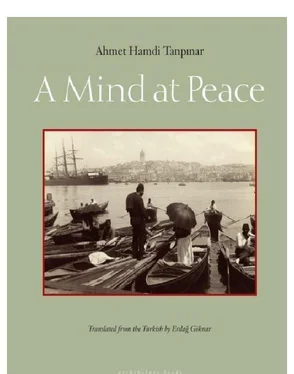
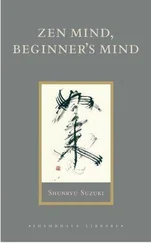
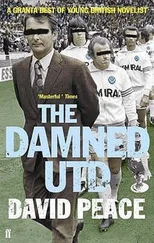
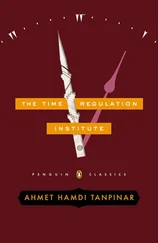

![Джон Харгрейв - Mind Hacking [How to Change Your Mind for Good in 21 Days]](/books/404192/dzhon-hargrejv-mind-hacking-how-to-change-your-min-thumb.webp)

